How to grow passion fruit in greenhouse? Key points of planting techniques of passion fruit in greenhouse
In recent years, with the promotion of facility agriculture, planting passion fruit in greenhouse has become a trend. Planting passion fruit in greenhouse is beneficial to preserve water and fertilizer, avoid abnormal fruit and lack of fruit, and improve the yield and quality of passion fruit.
I. Seedling selection
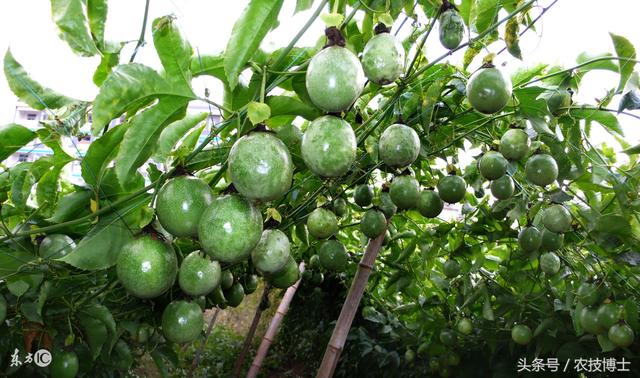
Healthy and strong seedlings free from diseases and insect pests should be selected when planting. Strong seedling standard: seedling height 30cm, off-soil surface 3cm stem diameter 0.6-0.8cm, well-developed root system and many white roots, green leaves but not thick green.
II. Bed consolidation
The whole border is carried out along the trend of greenhouse construction, the width of the border is 3m, the drainage ditch of 30cm × 20cm is dug between the border and the border, and the ridge box is raised along a straight line in the middle of the border. The base of the ridge box is 40-50cm wide and 40-50cm high, and the interval between the ridge box and the ridge box is 3.0-3.5m. The planting hole of 40cm depth is dug in the ridge box.
III. Colonization
It is suitable for planting in the greenhouse in February and March every year. 20-30kg of rotten organic fertilizer and 1.0-1.5kg of compound fertilizer are applied in each hole as the base fertilizer, and the base fertilizer is covered with the surface mature soil dug out when digging the hole, with a thickness of 15-20cm. The seedlings should be planted on the mature soil. When planting the seedlings, the seedlings should be taken out from the nutrition bag or seedling tray, and the nutrition bag should not be buried in the soil. When planting, the root system should be straightened out, layered filling, compaction, seedling root neck slightly higher than the planting surface 8-10cm, to ensure that the marriage interface exposed the soil surface, timely watering after planting. The planting spacing is 3.0m × 3.5m, with 60-70 plants per 667m2 species.
Fourth, wipe the bud
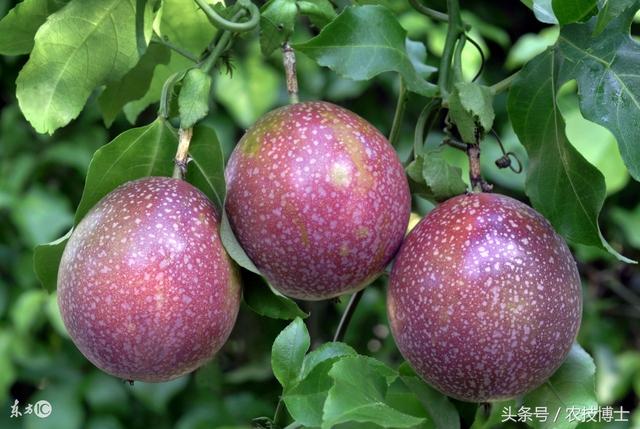
After the colonization survived, the axillary buds should be removed in time to make the main vine grow fast and stout, and wipe the buds once in 5-7 days.
Fifth, draw the vine
When the main vine grows to 40-50cm, a pillar should be inserted in time to guide the main vine on the shelf. When the main vine is on the shelf, it is often necessary to pull the side vine to wind and grow on the wire rack. After the side vine is full, the top is broken and tied up. The lateral vine moves towards one branch on one side, which is conducive to the early extraction of fruiting branches.
VI. Plastic surgery
The main vines and lateral vines are the main vegetative branches, and the secondary lateral vines grown from lateral vines are the main fruiting branches, so the cultivation of strong fruiting vines is an important part of increasing yield. When the main vine grows to 1.5m high, let it grow into lateral vines and grow on both sides.
7. Pruning
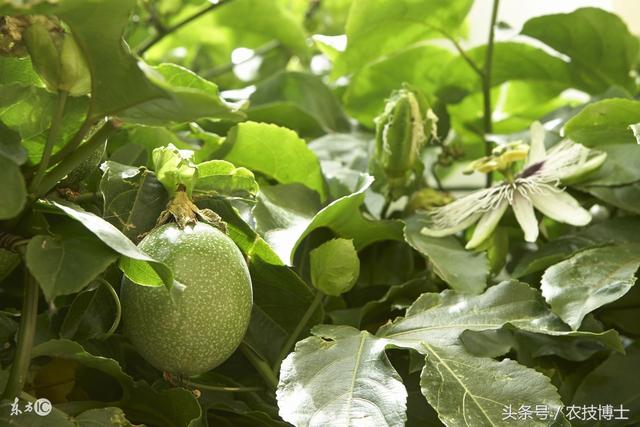
Passion fruit avoid heavy pruning, if excessive pruning, it is easy to make the main vine gradually withered, serious death of the whole plant. Generally, after each batch of fruit is ripe and picked, it is cut to 2 or 3 nodes in time to promote its re-growth of lateral vines. In summer, the overdense and drooping branches and leaves must be thinned to maintain good light and ventilation, and the drooping branches should be cut off at 30-40cm above the ground. After the last batch of fruit is harvested in winter, all fruit-bearing branches are cut off from the base to prevent overgrowth or overdensity of branches and leaves in the coming year.
8. Weeding
The orchard should be weeded irregularly before the fruiting mother branch is full, so as to prevent weeds from competing with saplings for fertilizer and breeding diseases and insect pests. The weeds removed can be buried in deep trenches in the planting site, or the orchards can be cleared and burned.
IX. Scientific management of water
Passion fruit is more resistant to drought, but the soil is too dry will affect the vine and fruit development, serious branches show withered shape, fruit development and fruit drop phenomenon will occur, in the soil whitening and drought need irrigation. Pay attention to drainage in the rainy season to prevent stagnant water from causing rotting roots.
X. scientific fertilization
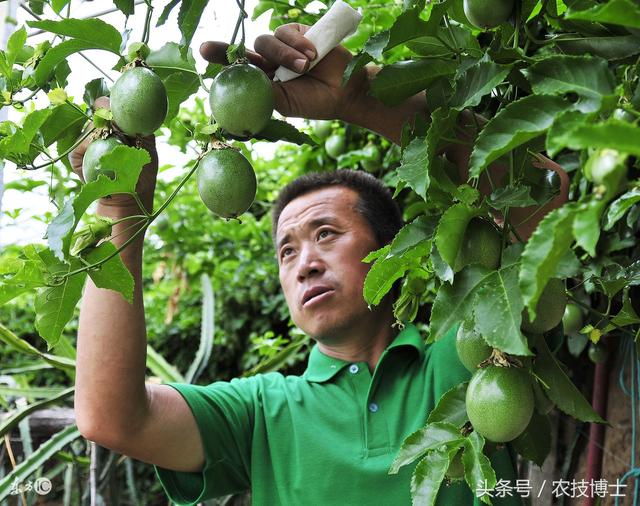
Heavy application of base fertilizer, frequent topdressing, the amount of fertilizer increased with the growth of seedlings, the appropriate ratio of nitrogen, phosphorus and potassium was 2 ∶ 1 ∶ 4, mainly nitrogen fertilizer in the early stage, phosphorus and potassium fertilizer in the later stage, avoid excessive or partial application of nitrogen fertilizer. Topdressing can be dug a shallow ditch at the 40cm around the root, sprinkled in the ditch, or foliar spraying, and compound fertilizer (15-15-15) was applied once in 15-20 days. Foliar fertilizer can be sprayed 7 days after planting, 0.1% Mel 0.3% KH 2PO 4 and 0.1% Mel 0.3% urea, and micro fertilizer 0.5-1.0kg per 667m2 is applied to promote early growth and rapid development. The fruit expands rapidly within 15 days after flowering, so it is necessary to increase the application rate of potash fertilizer to promote the rapid expansion of the fruit, and each plant is treated with compound fertilizer 0.5kg and potash fertilizer 0.05kg. In the fruiting stage, we should apply more phosphorus and potassium fertilizer to promote flower bud differentiation, and apply compound fertilizer 0.25kg, potassium fertilizer 0.05kg and potassium dihydrogen phosphate 1.0-1.5kg per plant.
11. Build scaffolding
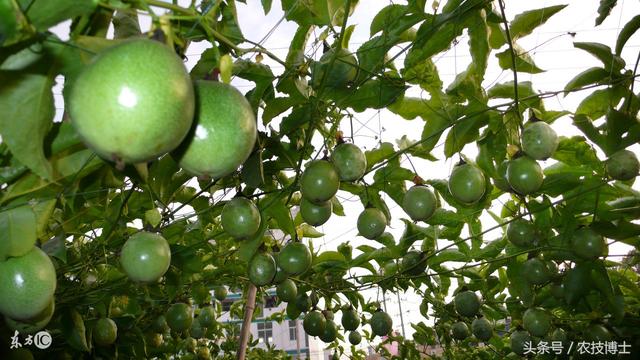
When the main vine grows to 40-50cm, it is necessary to start to build scaffolding. In order to make the whole scaffolding load-bearing, stable, durable, safe, convenient for farming, and ensure good light and ventilation, reasonable use of scaffolding methods and scaffolding materials. The scaffolding has flat roof, fence and "human" shape, and the scaffolding materials include cement column, hot-dip galvanized pipe, bamboo, wood stick, iron wire and so on. The scaffolding of the greenhouse test and demonstration area in Kantou Village, Heping Town, Shaowu City is built with a flat roof, with a height of 2m, a column with a diameter of 32 hot-dip galvanized water pipe, the column is buried in 50cm, and the column spacing is 3m × 3m. The main bar at the top of the column uses a hot-dip galvanized water pipe with a diameter of 25, and the column and the main bar are fixed not slippery, and 14 (diameter 2mm) wire is used to lay 40cm × 50cm field grid between the main bar.
12. Artificial assisted pollination
Artificial pollination is the main way to plant passion fruit in greenhouse, which can achieve the goal of uniform fruit size, good quality, high fruit setting rate, full content and less abnormal fruit. The purple variety passion fruit blossoms around 10: 00:00 every morning, and artificial pollination is carried out in time after flowering, and pollination is completed before 17: 00:00 in the afternoon. There are two methods of artificial pollination: one is to apply the pollen evenly to the three stigmas of the pistil with a brush; the other is to touch the pollen with five fingers, pull it back, and apply the pollen on the fingers to the three stigmas of the pistil. When touching the pollen, make sure the fingers are clean and do not touch foreign bodies.
XIII. Timely harvest and storage
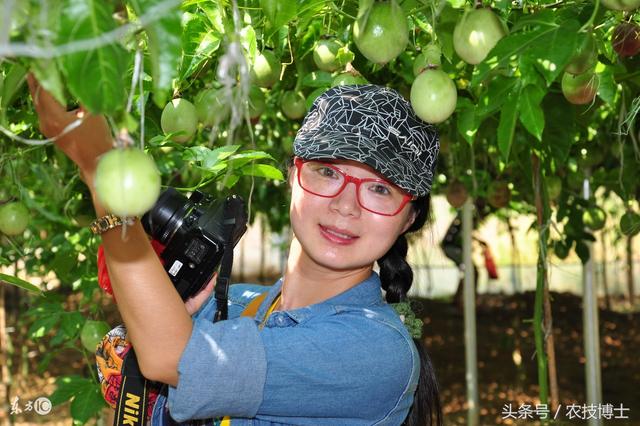
The pericarp of passion fruit gradually changed color 60-80 days after flowering. In order to ensure the fruit quality, when the fruit became purple and slightly fragrant 10 days before fruit falling, the immature fruit with green pericarp on the vine was not suitable to be harvested, and the immature fruit had high acidity and low aroma after ripening. When harvesting, handle it gently and avoid violent vibration to prevent the pulp from breaking away from the protective film. Ripe fruits can be stored in the fresh-keeping warehouse before sale to maintain moisture so as to avoid the wrinkling of pericarp caused by lack of moisture and affect the quality.
[conclusion] planting passion fruit in greenhouse is an important measure to realize the yield benefit of passion fruit planting, which is of far-reaching significance.
- Prev
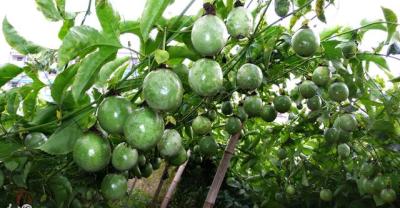
How to grow pitaya? How to choose dragon fruit seedlings? Pitaya planting technology
How to grow dragon fruit? How to choose dragon fruit seedlings? [Expert answer] Pitaya planting technology: [small series conclusion] Pitaya planting...
- Next
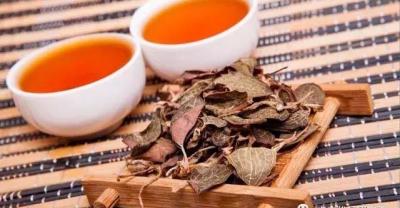
How to grow Jiwa lotus? The planting method of Jihua lotus
Jihua lotus, also known as Chihuahua, is a highly ornamental succulent plant. It is loved by many people because of its beautiful and lovely appearance. You must be.
Related
- Fuxing push coffee new agricultural production and marketing class: lack of small-scale processing plants
- Jujube rice field leisure farm deep ploughing Yilan for five years to create a space for organic food and play
- Nongyu Farm-A trial of organic papaya for brave women with advanced technology
- Four points for attention in the prevention and control of diseases and insect pests of edible fungi
- How to add nutrient solution to Edible Fungi
- Is there any good way to control edible fungus mites?
- Open Inoculation Technology of Edible Fungi
- Is there any clever way to use fertilizer for edible fungus in winter?
- What agents are used to kill the pathogens of edible fungi in the mushroom shed?
- Rapid drying of Edible Fungi

